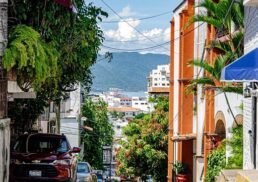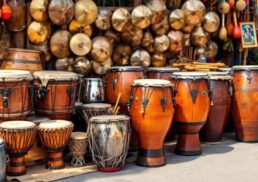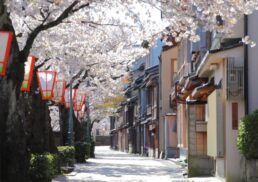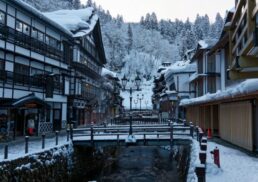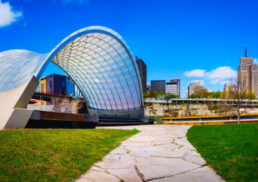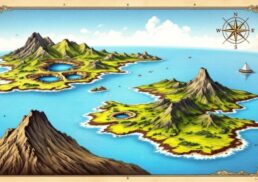Curious about the Bay Area? Whether you’re interested in its tech hubs, cultural hotspots, or scenic beauty, this guide covers it all. Explore the distinct regions, major cities, unique weather, and efficient transportation that make the Bay Area a fascinating place to visit.
Table of Contents
Key Takeaways
The Bay Area features distinct regions like the North Bay for wine, East Bay for culture, and South Bay for tech, each offering unique attractions.
Major cities such as San Francisco, San Jose, and Oakland showcase a mix of historical landmarks and modern experiences, appealing to diverse interests.
With a robust transportation network and abundant recreational options, the Bay Area is accessible and offers plenty of activities for visitors year-round.
Exploring San Francisco Bay Area Regions
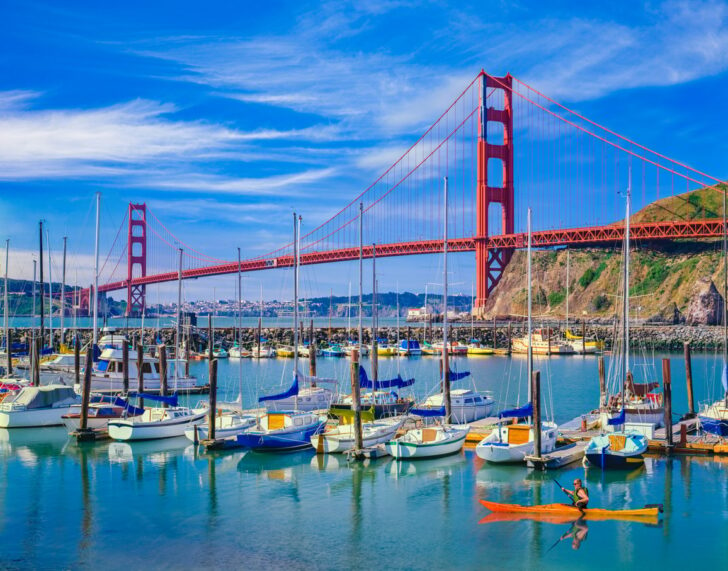
The San Francisco Bay Area comprises several distinct regions, including bay area cities, each offering unique attractions and experiences, from bustling urban centers to serene natural landscapes.
The North Bay, characterized by its mountainous terrain, includes Marin, Sonoma and Napa counties, and Solano counties. This region is famous for its vineyards and wineries, making it a haven for wine enthusiasts. Imagine spending a day wine tasting in Napa Valley, surrounded by rolling hills and lush vineyards.
Moving to the East Bay, you’ll find a mix of urban and suburban areas primarily in Alameda and Contra Costa counties. Oakland, the central city in this region, boasts a vibrant cultural scene with a rich arts culture, diverse neighborhoods, and significant landmarks like Lake Merritt and the Oakland Museum of California. The East Bay’s lively atmosphere and varied attractions make it a must-visit. Contra Costa County has seen significant growth in Latino populations, outpacing other areas in the Bay Area.
The Peninsula region, excluding San Francisco, is marked by its highly populated eastern side and vast open spaces along the San Francisco peninsula and the Pacific Coast.
The South Bay, encompassing the northern part of Santa Clara County and parts of San Mateo County, is often associated with tech industry hubs like Silicon Valley. This area is a tech lover’s paradise, home to numerous technology companies and startups.
Major Cities in the Bay Area: San Jose
The Bay Area is home to several major cities, each with its own unique character and attractions. These cities are the heartbeat of the region, offering a mix of historical landmarks, cultural experiences, and modern innovations.
San Francisco, the crown jewel of the Bay Area, is famous for its iconic Golden Gate Bridge, offering stunning views and walking paths. Its vibrant cultural scene, including neighborhoods like Chinatown, downtown san francisco, and the Mission District, attracts many tourists.
San Jose, at the heart of Silicon Valley, is a tech hub famed for its numerous startups and the Winchester Mystery House, known for its architectural oddities. The city’s blend of history and innovation offers a unique experience for visitors.
Oakland, a major city in the East Bay, boasts a rich arts culture and diverse neighborhoods. Landmarks like Lake Merritt and the Oakland Museum of California highlight its vibrant cultural scene. Oakland’s eclectic mix of attractions makes it a unique Bay Area destination.
Berkeley, home to the University of California, offers a rich academic environment and cultural attractions like the Berkeley Art Museum. Its proximity to San Francisco and accessible public transit make it a worthwhile visit.
Climate and Weather Patterns
The Bay Area experiences a Mediterranean climate, characterized by mild, wet winters and warm, dry summers. This climate makes it an appealing destination year-round, with each season offering its own unique charm.
One of the fascinating aspects of the Bay Area is its microclimates, which lead to varying temperatures and weather conditions within relatively short distances. For instance, you can experience cool, foggy conditions in San Francisco while enjoying warm, sunny weather in the inland areas.
Summer temperatures can vary significantly, with coastal areas being cooler due to marine fog, while inland regions can become quite hot. This diversity in weather patterns means there’s always a perfect spot to visit, regardless of the season.
Late spring and early fall are ideal times to visit the Bay Area, with generally stable and pleasant weather. These seasons offer mild temperatures and clear skies, perfect for outdoor activities and sightseeing.
Getting Around the Bay Area
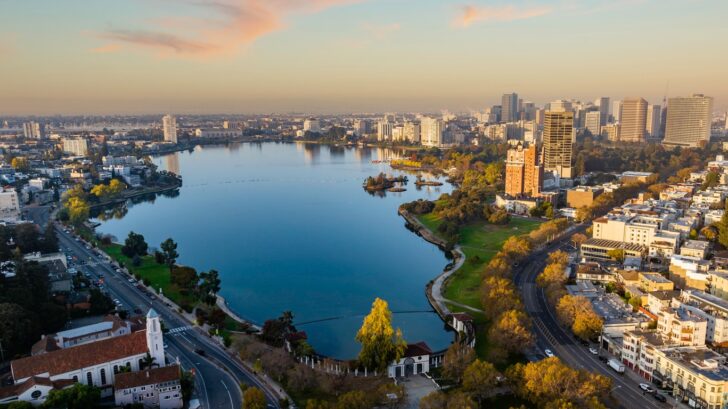
The San Francisco Bay Area boasts a comprehensive transportation network that makes getting around both convenient and enjoyable. Whether you’re flying in, taking public transit, or exploring on a bike, there are plenty of options to choose from.
The Bay Area is served by three major airports: San Francisco International Airport (SFO), Oakland International Airport (OAK), and San Jose International Airport (SJC). These airports connect the region to various domestic and international destinations, making it easy for visitors to access the area.
Public transit is robust, with BART (Bay Area Rapid Transit) serving as a primary system connecting multiple cities across the region. Caltrain provides commuter rail service between San Francisco and San Jose, catering to daily travelers in the area.
Ferries operate across the Bay, providing scenic routes between waterfront locations. The Bay Area also features extensive bike paths and lanes, promoting cycling as a popular transportation mode. These options ensure easy exploration of the region.
By Plane
The San Francisco Bay Area is served by three major airports: San Francisco International Airport (SFO), Oakland International Airport (OAK), and Mineta San Jose International Airport (SJC). These airports offer a wide range of domestic and international flights, making it easy to get to and from the Bay Area.
San Francisco International Airport (SFO) is located in South San Francisco and is a major hub for United Airlines. It offers non-stop flights to over 200 destinations worldwide, making it a convenient gateway for international travelers. The airport features a variety of amenities, including numerous dining options, shops, and lounges, ensuring a comfortable travel experience.
Oakland International Airport (OAK), situated in the East Bay, is a hub for Southwest Airlines. It provides non-stop flights to over 50 destinations across the United States, Mexico, and Costa Rica. Known for its efficiency and shorter security lines, OAK is a popular choice for domestic travelers. The airport also offers a range of amenities and easy access to public transportation, including BART (Bay Area Rapid Transit).
Mineta San Jose International Airport (SJC) is located in San Jose and serves as a hub for Alaska Airlines. It offers non-stop flights to over 50 destinations in the United States, Mexico, and Costa Rica. SJC is known for its modern facilities and convenient location in the heart of Silicon Valley. Travelers can enjoy various amenities, including dining options, shops, and lounges, as well as easy access to public transportation and ride-hailing services.
All three airports provide a range of transportation options, including BART, buses, and ride-hailing services, making it easy to reach your destination within the Bay Area.
By Train
The San Francisco Bay Area boasts a comprehensive rail network, making it easy to navigate the region without a car. The Bay Area Rapid Transit (BART) system connects San Francisco to the East Bay and other parts of the Bay Area, while Caltrain links San Francisco to San Jose and the South Bay.
BART (Bay Area Rapid Transit) is a rapid transit system that serves as a vital link between San Francisco and the East Bay. With over 40 stations, including a stop at San Francisco International Airport, BART offers frequent and reliable service. It’s an excellent option for commuters and tourists alike, providing easy access to major attractions and business districts.
Caltrain is a commuter rail system that connects San Francisco to San Jose and the South Bay. With over 30 stations, including the centrally located 4th and King Street Station in San Francisco, Caltrain offers a convenient and scenic way to travel along the Peninsula. The service is frequent, and the trains are equipped with bike storage and Wi-Fi, making it a popular choice for daily commuters and weekend travelers.
Amtrak, the national rail service, connects the Bay Area to other parts of California and the United States. With over 20 stations in the Bay Area, including the Emeryville Station near San Francisco, Amtrak provides long-distance travel options. The service includes amenities such as comfortable seating, dining cars, and Wi-Fi, ensuring a pleasant journey.
All three rail systems offer affordable fares and convenient transportation options, making them an excellent choice for exploring the Bay Area.
Educational Institutions in Silicon Valley
The Bay Area is home to some of the most prestigious educational institutions in the world, making it a hub for academic excellence and innovation. The University of California, Berkeley, is renowned for its extensive contributions to research in fields such as earthquake science and robotics. The university’s academic environment influences the city’s arts and culture, making Berkeley a vibrant place to visit.
Stanford University, located in Palo Alto, offers a wide array of undergraduate and graduate programs with a strong emphasis on technology and innovation. Its proximity to Silicon Valley enhances its focus on cutting-edge research and development.
San Jose State University provides a practical learning environment with a comprehensive curriculum across over 250 academic disciplines. The university’s focus on practical experiences prepares students for various career paths.
California State University, East Bay, and San Francisco State University offer diverse academic programs, serving a significant number of first-generation college students and contributing to the region’s educational landscape. These institutions play a crucial role in shaping the future of the Bay Area.
Government and Politics
The Bay Area’s government and political landscape are characterized by collaboration and a progressive stance on various issues. Local governance involves a partnership among various city and county governments to address common challenges. This collaborative approach ensures that the region can effectively manage its resources and provide essential services to its residents.
Incorporated cities within the Bay Area have responsibilities that include police service, zoning, building permits, and maintaining public streets. These city governments play a crucial role in ensuring the safety and well-being of their communities.
The political stance of the Bay Area is known for being liberal, reflecting the region’s progressive values and commitment to social justice. This political climate has fostered a culture of innovation and inclusivity.
The Association of Bay Area Governments (ABAG) serves as the principal metropolitan planning organization, facilitating regional planning and development. ABAG’s efforts ensure that the Bay Area continues to thrive and grow sustainably.
Sports and Recreation
Sports and recreation are integral to the Bay Area’s vibrant lifestyle, offering numerous opportunities for both spectators and participants. The Bay Area is home to major professional sports teams, including the Golden State Warriors, who play at the Chase Center. The Warriors have a strong following and are known for their dynamic style of play.
The San Jose Earthquakes, competing in Major League Soccer, have won MLS Cup titles in 2001 and 2003. Their matches are a thrilling experience for soccer fans. Ice hockey enthusiasts can cheer on the San Jose Sharks, who have made several playoff appearances since their inception in 1991. The team’s games are a major highlight of the local sports scene.
New teams like Bay FC, set to begin play in 2024, and the Golden State Valkyries, joining the WNBA in 2025, are expanding the region’s sports landscape. These additions promise to bring even more excitement to the Bay Area’s sports community.
Outdoor Activities
The San Francisco Bay Area is a nature lover’s paradise, offering a wide range of outdoor activities to enjoy. From hiking and biking to kayaking and surfing, there’s something for everyone in this diverse region.
Hiking enthusiasts will find numerous trails to explore, including the famous Lands End Trail in San Francisco, which offers stunning views of the Golden Gate Bridge and the Pacific Ocean. For a more challenging hike, head to Mount Tamalpais State Park in Marin County, where you can trek through redwood forests and enjoy panoramic vistas of the Bay Area.
Biking is another popular activity, with a comprehensive network of bike lanes and trails available. The Bay Trail, which runs along the San Francisco Bay, is a favorite among cyclists, offering scenic routes and easy access to waterfront parks and attractions.
For those who enjoy water sports, the Bay Area has plenty to offer. Kayaking is a great way to explore the San Francisco Bay and the Pacific Ocean, with numerous spots available for both beginners and experienced paddlers. Surfing enthusiasts can catch waves at the famous Ocean Beach in San Francisco or head to the Santa Cruz Beach Boardwalk in Santa Cruz County for a vibrant surf culture and excellent waves.
The Bay Area is also home to numerous parks and nature reserves, including the Golden Gate National Recreation Area and the Muir Woods National Monument. These parks offer a range of outdoor activities, including hiking, biking, and bird-watching, providing endless opportunities to connect with nature.
Overall, the San Francisco Bay Area is a fantastic destination for outdoor enthusiasts, with a wide range of activities and attractions to suit all interests and abilities. Whether you’re hiking through redwood forests, biking along scenic trails, or kayaking in the bay, you’re sure to find an adventure that suits your style.
Dining and Cuisine
The Bay Area’s dining scene is as diverse as its population, offering an array of culinary delights that cater to every palate. The region is recognized for its diverse culinary offerings, emphasizing both fine dining and casual eateries. Many restaurants focus on seasonal and locally sourced ingredients, contributing to unique menu items.
Berkeley’s Chez Panisse is celebrated for pioneering California cuisine, blending French techniques with local produce. This approach has influenced many other establishments in the area.
The Bay Area’s culinary scene features a mix of ethnic cuisines, including Mexican, Chinese, and Indian, showcasing the region’s multicultural heritage. This variety ensures that there’s something for everyone, from street food to high-end dining.
Tasting menus have become a trend in many Bay Area restaurants, allowing chefs to showcase their creativity and seasonal ingredients. These experiences offer a unique and memorable dining adventure.
Safety Tips for Visitors
Safety is a top priority for visitors exploring the Bay Area. San Pablo, along with other neighborhoods, is known for higher crime rates, so take special care when traveling there. Here are some tips to ensure a secure and enjoyable visit.
Stay aware of your environment and avoid distractions like your phone while in public. Being mindful of your surroundings can help you stay safe.
Keep personal belongings close and do not leave items unattended in public places. This simple precaution can prevent theft and loss.
Travel in groups when possible, especially at night, and opt for well-lit and busy streets. This approach enhances security and reduces the risk of incidents.
It’s advisable to park in secure garages and remove all valuables from your vehicle. Taking these steps can help prevent break-ins and vehicle theft.
Health and Wellness
Health and wellness are essential considerations when exploring the Bay Area’s great outdoors. It’s crucial to conduct thorough tick checks on yourself and pets after spending time outdoors to reduce the risk of Lyme disease. Wearing light-colored clothing and proper gear can make it easier to spot ticks.
Repellents containing DEET on skin and permethrin on clothing offer effective protection against ticks, significantly reducing the risk of bites. Showering soon after outdoor activities can help remove ticks before they attach, reducing the risk of disease transmission. Ideally, removing ticks within 24 hours minimizes the risk of Lyme disease.
In case of an emergency, dialing 911 will connect you to police, fire, and medical services. Knowing this can provide peace of mind during your visit.
Cultural Attractions
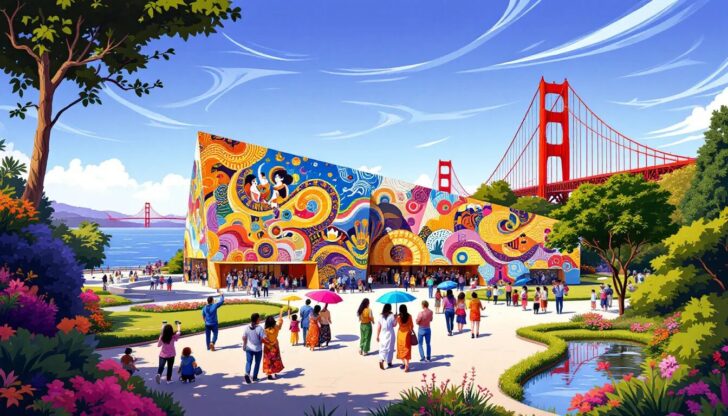
The Bay Area is a treasure trove of cultural attractions, offering a rich tapestry of historical sites, museums, and art galleries that reflect its diverse heritage. Berkeley is particularly famous for its historic university, UC Berkeley, which significantly influences the city’s cultural landscape. The Berkeley Art Museum and the scenic hills overlooking the Bay are among the city’s unique attractions. These sites provide a blend of academic excellence and natural beauty.
The Bay Area was a significant hub for the Abstract Expressionism art movement during the mid-20th century. This artistic heritage is evident in the numerous galleries and art installations scattered throughout the region.
The region’s rich cultural diversity is highlighted through various music festivals, art exhibitions, and community events held throughout the year. These events celebrate the Bay Area’s multiculturalism and offer endless opportunities for cultural enrichment.
Day Trips and Nearby Destinations: Sonoma and Napa Counties
The Bay Area’s strategic location makes it an ideal starting point for numerous day trips and nearby destinations, each offering distinct experiences.
Napa Valley, located about 50 miles north of San Francisco, is renowned as a premier wine region with over 400 wineries. A visit to Napa offers a chance to indulge in wine tasting and enjoy the picturesque vineyards.
Sonoma, approximately 45 miles north of San Francisco, offers a more relaxed atmosphere with equal access to wineries and family-friendly activities. It’s perfect for those seeking a more laid-back yet equally enchanting experience.
Big Sur, about 150 miles south of San Francisco, offers stunning coastal vistas and hiking opportunities in its redwood forests.
Santa Cruz, located 75 miles south of San Francisco, is known for its beaches and vibrant surf culture. Further south, Monterey is famous for its breathtaking coastline and attractions like the Monterey Bay Aquarium.
Nearby Carmel-by-the-Sea offers beautiful beaches and a quaint village atmosphere. These destinations provide a perfect escape from the hustle and bustle of city life.
Learn more, checkout The 9 Best Day Trips From Napa and Sonoma
Summary
The San Francisco Bay Area is a region of unparalleled diversity and charm. From its distinct sub-regions and major cities to its robust transportation network and prestigious educational institutions, the Bay Area offers a wealth of experiences for residents and visitors alike.
The area’s government and political landscape, vibrant sports and recreational activities, diverse dining scene, and numerous cultural attractions further enhance its appeal. Whether you’re exploring the bustling streets of San Francisco, enjoying the serene vineyards of Napa Valley, or partaking in a local cultural festival, there’s something for everyone in the Bay Area.
As you plan your visit, keep in mind the safety tips and health considerations to ensure a secure and enjoyable experience. The Bay Area’s unique blend of natural beauty, technological innovation, and cultural richness makes it a must-visit destination that promises unforgettable memories.
Frequently Asked Questions
What are the main regions of the Bay Area?
The Bay Area is primarily divided into the North Bay, East Bay, Peninsula, and South Bay, each boasting its own charm and attractions like the vineyards of Napa Valley and the vibrant cities of Oakland and San Jose. It’s a diverse region with something special in every corner!
What transportation options are available in the Bay Area?
You have plenty of transportation options in the Bay Area! You can fly out of major airports, take public transit like BART or Caltrain, hop on a ferry, or even bike along the many paths available.
What are the major educational institutions in the Bay Area?
If you’re looking for top-notch education in the Bay Area, you can’t go wrong with the University of California, Berkeley, Stanford University, and San Jose State University. These institutions are just a few of the many that make the region a hub for learning and innovation.
What are some must-visit cultural attractions?
If you’re looking for must-visit cultural attractions, check out the Berkeley Art Museum, historical sites, and vibrant music festivals that showcase the area’s diverse culture. You won’t want to miss the art exhibitions that truly highlight the local heritage!
Are there any safety tips for visitors?
Absolutely! Stay aware of your surroundings, keep your belongings close, travel in groups when you can, and park in secure garages for a safer experience.

